Trials and Tribulations of Spring 2003
Extreme weather conditions, the war with Iraq and the weakened economy are just some of the factors that were noticed this spring for garden centers across the country. For the most part, garden centers came out ahead despite the poor spring conditions, but things could have been better. Lawn & Garden Retailer surveyed garden centers around the country to find out about the ins and outs of the 2003 spring selling season.
This spring was hit hard by rain, and it will sound weird to say, but drought was also somewhat of a problem too, though not nearly as bad as it was in 2002. Temperature also seemed to be a problem. Spring was a little colder than normal in different parts of the country, and then, all of a sudden, temperatures were in the 90s, with no variation in between.
However, people noticed that despite the rain, customers were still coming into the garden center and shopping. What were they buying in this rain? Color a lot of colorful annuals and perennials for their gardens. Garden centers noticed that people were spending more time on their gardens and using colorful plants and large garden accents like ponds or trellises along with garden care products like soil amendments and fertilizers. The consensus was that war made people afraid to leave their homes, which makes them want to add some nice color to their yards to make it a comfortable place to relax. Here are some actual accounts of what happened at garden centers during this memorable 2003 season.
How was your 2003 spring season?
“Fantastic. We set outstanding records. For the month of May, we actually set new records. We did significantly better than 2002; 2001 was our previous record-year, and we knocked that one off too.” Richard Ellis, Sids Greenhouses, Palos Hills and Bolingbrook, Ill.
“Actually, it was pretty good. I think we did some good advertising we got the word out there. We had such a broad range of material plant-wise, and also hard goods, that we were able to offer to a lot of people a lot of different things.” Ray Schwall, Begick Nursery and Garden Center, Bay City, Mich.
“It was a good season. It was a bit soft. The last few seasons have been soft for us. We are pretty close to neck and neck with 2002, within 1- or 2- percent variance. We hoped it would have been stronger, but we look good, and we’re still knee-deep in people, just not a record-breaking year.” LaRene Bautner, Millcreek Gardens, Salt Lake City, Utah.
“We were better than 2002 and about equal with 2001, which was a very good year. My garden center is different because it’s very large, but it’s about 90 percent outside. Customers were still coming in even in the rain. If I had a large enclosed area, we might have even busier.” Matt Horn, Matterhorn Nursery, Spring Valley, N.Y.
“Spring started off with a bang April was exceptionally good. But in May, we got hit with the heavy rain that moved through the country and kind of knocked us down a little bit. We’re still struggling to extend our season.” Sandi McDonald, Hillermann Nursery and Florist Washington, Mo.
Did the weather affect sales for 2003?
Horti Fair Holds Top Position
“I think that because it kept raining, people just said ‘Well, you know, I gotta do this, anyway.’ So, we handed out umbrellas at our nursery. We gave them to our customers to walk around with. They wanted to buy flowers and the things they need, and it didn’t look like it was ever going to stop raining.” Rick Dentner, Buck’s Country Garden, Doylestown, Pa.
“We had the coolness and the dampness so people kind of stuck around the house and worked in the yard. I think that helped us a little bit. The rain was a little above average, but people were still coming despite the rain.” Ray Schwall, Begick Nursery and Garden Center, Bay City, Mich.
“The Mid-Atlantic states have all been suffering with this weather. Sales are down 10-12 percent in this region. We’re around 12 inches ahead of our annual average right now, so it’s been an extremely wet season. This is coming on the last two years of drought seasons, so it’s a radical difference.” James White, Campbell & Ferrara Nurseries, Alexandria, Va.
“We started out extremely cold. A lot of things were set back, and then we had about 40 days of rain it rained about every weekend in the months of May and June. Then it went from rainy and cool to 90° F and humidity. Spring was very trying this year; but sales were good. Matt Horn, Matterhorn Nursery, Spring Valley, N.Y.
Did you notice any effects from the weak economy or the war?
“It really did not have any effect on us other than a sense of customers staying closer to home, which actually helped sales. And there definitely was an increase in patriotic themes this year. American flags have sold wonderful this year, as well as some of our theme planters red, white and blue and color mixes for annuals.” Richard Ellis, Sids Greenhouses, Palos Hills and Bolingbrook, Ill.
“It hasn’t done anything for us, but it’s done something to us. We’re up a little bit, but I think we would be a lot stronger if it weren’t for people being shaky. As for bigger purchases, people are looking, they come back many times but they’re not closing the sale.” Ann Lovejoy, Bainbridge Gardens, Bainbridge Island, Wa.
“The economy did affect us a little because a lot of our customers used discretionary income from their dividends. We’re known for our color; you can always find mixed containers here, and we didn’t do as much of that on a big scale because people were not entertaining as much.” Ann Sparkman, Martin Nursery, Greenville, S.C.
“Overall, I do see people are recuperating and making more outdoor rooms and enjoying their homes more. People are definitely enhancing those areas. We do water gardening, outdoor lighting, and brick and patio work, and we see a lot of growth in those areas.” Sandi McDonald, Hillermann Nursery and Florist, Washington, Mo.
What percentage of sales was hard goods vs. live goods. What were the best-sellers?
“For us, about 15 percent was hard goods; that was our protected sales. The most popular selling live good was annuals, but I’m including in that the larger premium annuals. They were bigger earlier on, and I think people were looking more for instant gratification.” Ann Sparkman, Martin Nursery, Greenville, S.C. Ann Sparkman, Martin Nursery, Greenville, S.C.
“About 30 percent hard goods, 70 percent live goods. Everything has done pretty well this spring, especially statuary, pots and chemicals. The one thing that really increased amazingly over last year is a product called Soil Activator, which is a soil amendment to increase drainage. It’s a real drought-related product.” Connie Nelson-Cleverley, Gulley Greenhouses, Ft. Collins, Co.Ann Sparkman, Martin Nursery, Greenville, S.C.
“Let’s say 68 percent live and 32 percent hard. I would say the number one-selling thing is compost, and close to that would be things like root stimulators to give quicker establishment. Slugbaits are high on the list and then a water-soluble fertilizer.” LaRene Bautner, Millcreek Gardens, Salt Lake City, Utah.Ann Sparkman, Martin Nursery, Greenville, S.C.
“We must be doing about 80 percent in plant material. I think people were looking for the bread-and-butter perennials and standard garden performers. We had a fabulous year for roses, despite the rain. I think that annual sales really showed a decline this year because the growers couldn’t produce plants that had good flowers on them because of low light.” Patti Castorani, Gateway Garden Center, Hockessin, Del. Ann Sparkman, Martin Nursery, Greenville, S.C.
Did you sell any branded material? If so, which brands? Did customers ask for any brands?
“We sell Proven Winners, and we do very well with it. Other brands we are a Master Nursery dealer, so we have our branded soils, and we do extremely well with them.” Rick Dentner, Buck’s Country Garden, Doylestown, Pa. Ann Sparkman, Martin Nursery, Greenville, S.C.
“Steppables have done fine; they’ve done pretty well in the last couple of years. People like the idea once they get it. The neat thing about the display is that you can actually grow plants in Flagstone, and customers can see what it looks like.” Connie Nelson-Cleverley, Gulley Greenhouses, Ft. Collins, Co.
“I sold some Proven Winners, and it did pretty well. If customers liked it, they came back a couple weeks later looking for it again.” James White, Campbell & Ferrara Nurseries, Alexandria, Va.
“We do Proven Winners and P. Allen Smith. With my customers, if the plant looks good and is good quality at a fair price, they’ll buy it. And if it doesn’t look good, they’re not going to buy it regardless if there’s a brand on it.” John Trax Jr., Trax Farms, Finleyville, Pa.
What kinds of marketing or promotional strategies did you use this spring? What was the most successful and why?
“We did a lot of advertising on WGN Radio in Chicago sponsored by P. Allen Smith’s new series on the local PBS station, and we had a 5,000 sq.ft. garden at the Chicago Flower Show in March. We do home and garden showplace flyers, and we also produce our own eight-page color flyer, five of those in the spring. In early March, we had our annual home and garden exposition where we set up like a trade show with about 80 vendors. We had just under 4,000 customers come for the show. We include 24 seminars, a food court, remote parking and the Chicago Trolley shuttling between the store and parking lots.” Richard Ellis, Sids Greenhouses, Palos Hills and Bolingbrook, Ill.
“We had events with seminars, one-day sales, things like that. They really had a lot more impact than the traditional, put 10 different things on sale. I think the fact we went with events really helped build our customer count and our average sale.” Rick Dentner, Buck’s Country Garden, Doylestown, Pa.
“You know, our biggest tool is our newsletter. I know there’s a lot of debate about whether it works or not, so we always have a coupon, which is a great indicator. And that is very effective for us.” Ann Lovejoy, Bainbridge Gardens, Bainbridge Island, Wa
“We do a lot of direct mail; that has been very successful for us. We actually mailed out a postcard in April, which is also our anniversary month, at the kick-off of National Garden Month and Earth Day that had a 30-percent return on the included coupon, which I think was pretty phenomenal.” Sandi McDonald, Hillermann Nursery and Florist, Washington, Mo.
Based on what you experienced this spring, what will you do differently for spring 2004?
“For 2004, we are repositioning some things. This year we’re going to be shifting our concrete statuary and fountains to a different location and putting other items in that area. And we’re adding space to our bird department for next year. We’re also going to move part of our pond department to the front of the building so it’s more visible from the parking lot.” Richard Ellis, Sids Greenhouses, Palos Hills and Bolingbrook, Ill.
“I’m building a structure that will keep my customers out of the rain. We’ve been contemplating the idea, and this year has taught us that the customers were willing to come out to some extent but were frustrated by the rain. We have the luxury of the space to be able to put some things in. The flipside for us is extending that season; this new greenhouse structure will have roll-up roofs, so we can push earlier in the season without worrying about a light frost. That’s always been a primary goal of ours in that you have more people than you can deal with in April how do you get some of them in March?”Ann Sparkman, Martin Nursery, Greenville, S.C.
“The only thing I’m really going to be able to change is to be ready for rainy weather. We had to construct some canopies to cover some of our material. The biggest thing I would do is intensive staff training on care of the stock. Also, improve my rainy day plans for when I have weeks of rain and can’t keep the material out of the rain enough.” James White, Campbell & Ferrara Nurseries, Alexandria, Va.Ann Sparkman, Martin Nursery, Greenville, S.C.
“Stay focused on what we do best, which is provide an enormous selection of high-end, high-quality plant material, and combine that with a knowledgeable staff and great customer service. We feel that’s been a formula that we need to stay with and pay attention to.” Patti Castorani, Gateway Garden Center, Hockessin, Del.
“Plan ahead, keep to our timeframe, get our signage out early and do whatever it takes to stay with the plan. Stay on the path, stay on the path, die on the path.” LaRene Bautner, Millcreek Gardens, Salt Lake City, Utah.




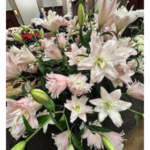

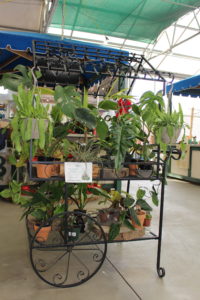
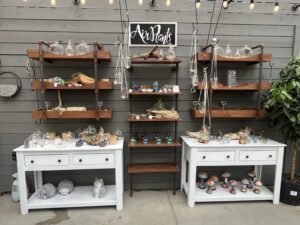
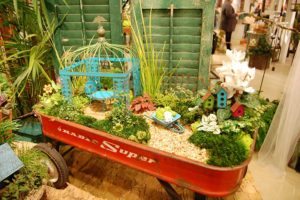
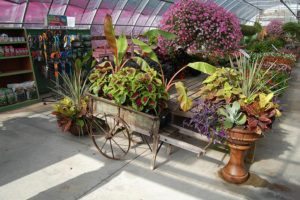
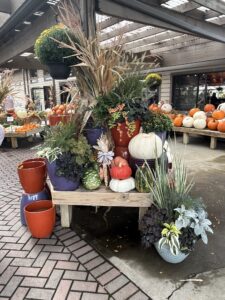
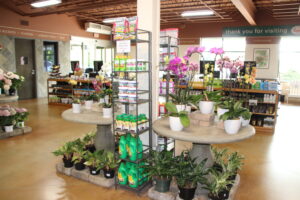
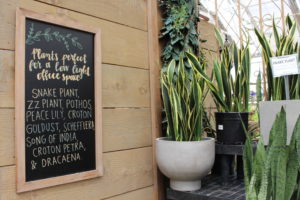
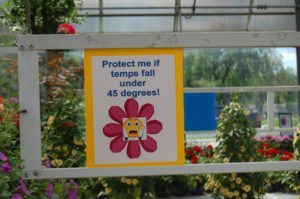
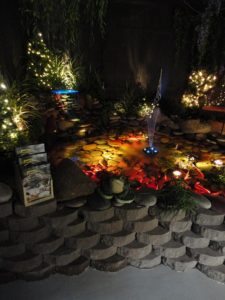

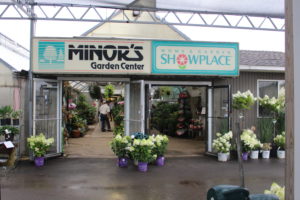
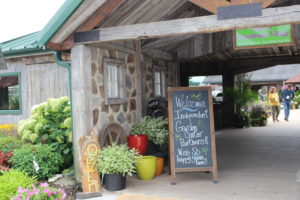
 Videos
Videos





